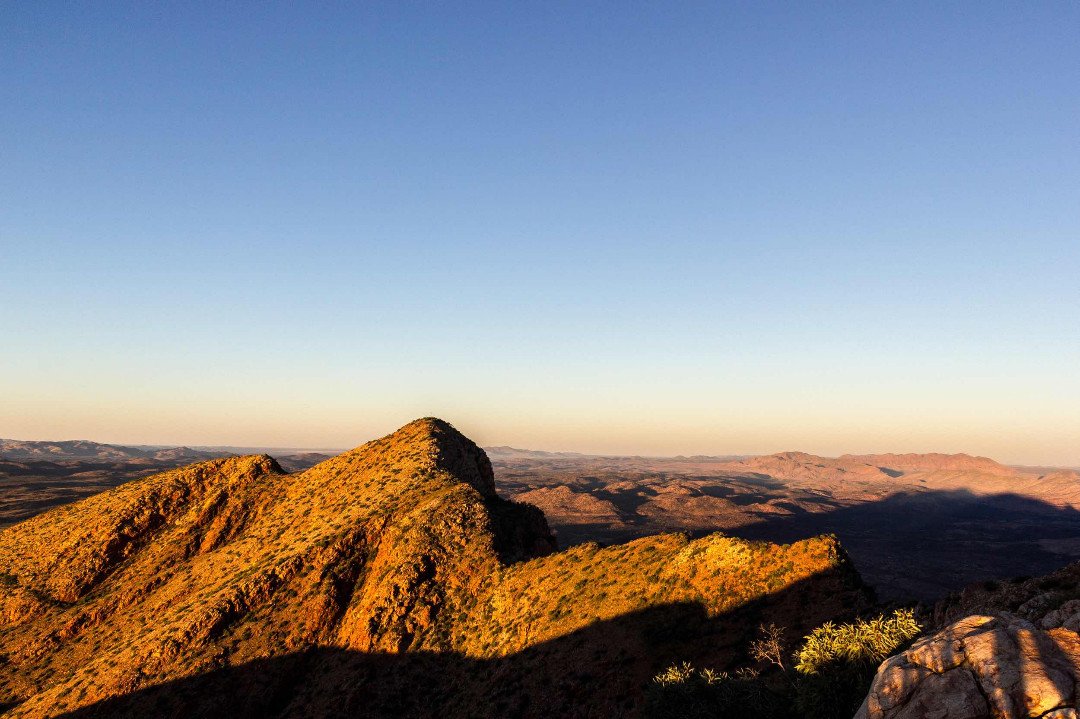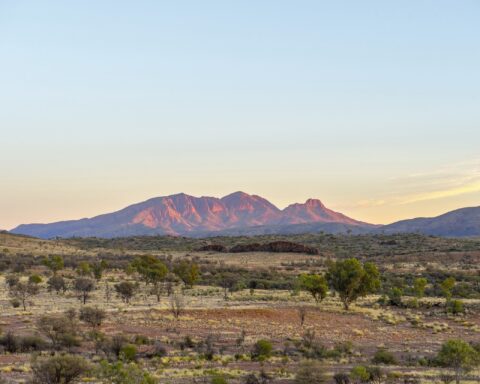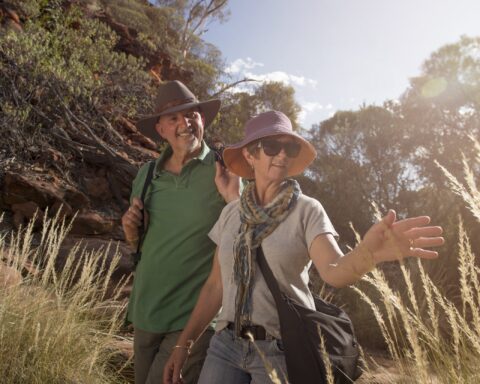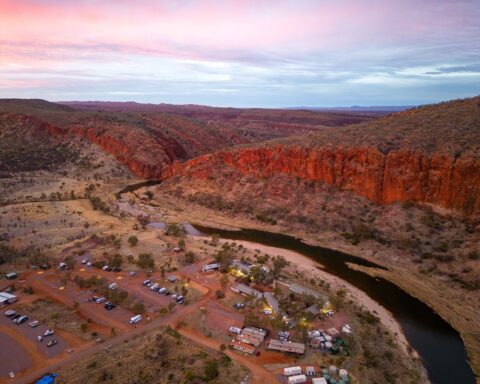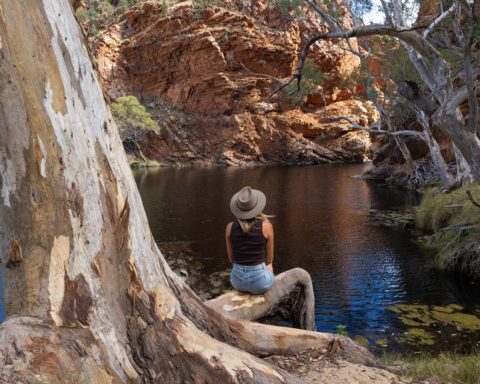Aboriginal sacred sites are parts of the natural landscape, such as rocks, hills, trees, and lakes that have a special significance in Aboriginal culture. Their significance comes from Dreamtime stories, which refer to the very beginning when it is believed that spirits created the land and the people, as well as these specific sacred sites which must be respected. Some sites are selected as male sites, which women cannot enter, and others are chosen as female sites which men may not visit. Ceremonies relating to the events in Dreamtime stories may be held at the sites. It is believed that any damage to these sites can put the community in serious danger, however many have already been lost to development. Sacred Sites in the Northern Territory are now protected under the Aboriginal Land Rights(Northern Territory) Act (1976) and the Northern Territory Aboriginal Sacred Sites Act (1989).
The Alice Springs area is home to over 100 sacred sites, some of which are in the town centre and some of which are further afield in the MacDonnell Ranges and nature parks. There are seven registered sacred sites and trees of significance within the Araluen Cultural Precinct alone. These sites include Yaye (big sister hill), Yaye Akweke (little sister hill), and an ancient corkwood tree. According to Dreamtime stories, the two hills represent two sisters who were travelling from the west and chose this site to rest. They were aware of a man watching them as they rested before they continued onwards towards the Todd River. Visitors are asked not to climb the hills due to their cultural significance. The 300-year old corkwood tree which stands watch over the precinct is also a part of the story, and the Araluen Arts Centre was specifically designed to protect the tree.
Another sacred site is Mount Gillen. This comes from the Dreamtime story of a local dog named Akngwelye, who fought with an intruder and ripped out their intestines. It is believed that this created many of the natural features of the landscape just west of Alice Springs and that Akngwelye is now embodied in the striking peak of Mount Gillen.
Located just a few kilometres east of the CBD, Coolibah Swamp is a sacred ceremonial site for the Arrernte people (the traditional owners of the Alice Springs area). In the past, the area was a beautiful natural wetland system dotted with coolibah trees. In Aboriginal culture, it is believed that at the time of creation, travelling yeperenye (caterpillars) met up with local yeperenye here to celebrate. The coolibah trees now represent the caterpillars dancing.
Emily and Jennie Gaps in the East MacDonnell Ranges are also important sacred sites associated with the caterpillar trail. Emily Gap is believed to be where the caterpillar beginnings of Alice Springs originated and is home to Aboriginal art depicting the caterpillar dreaming. Due to the cultural significance, visitors are asked to avoid touching any of the art and to refrain from climbing the rocks in the gaps and taking photos of Emily Gap.

